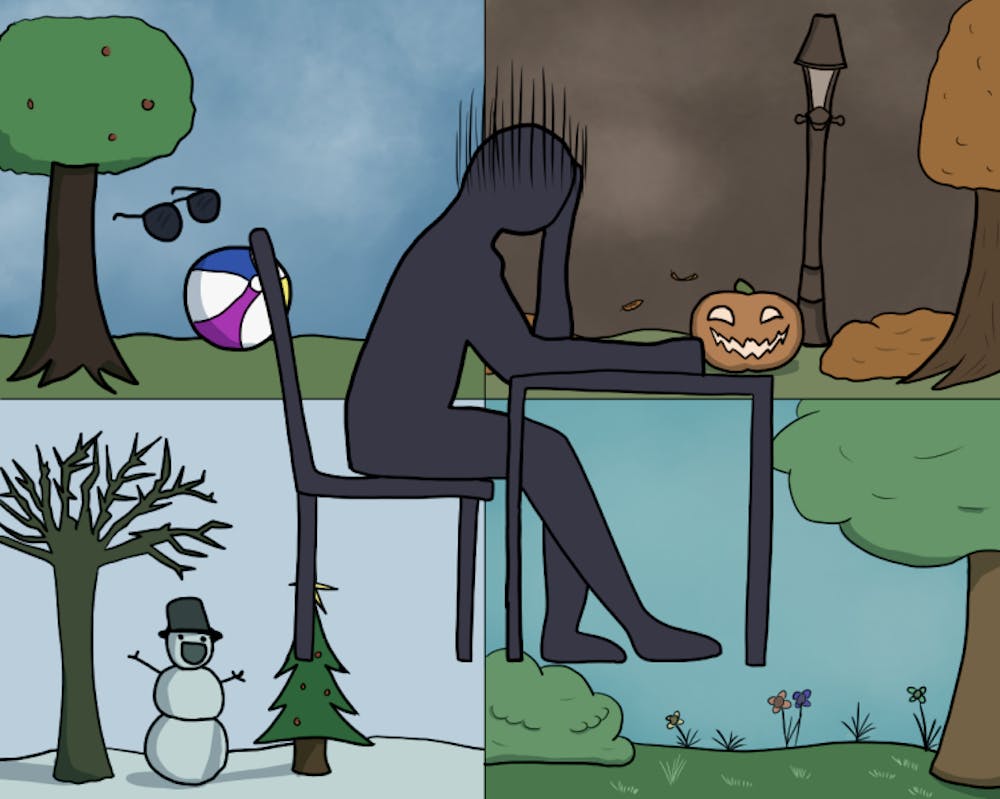Seasonal Affective Disorder (SAD), a seasonal depression that affects four to six percent of the U.S. population, does not receive enough attention.
SAD is a mood disorder characterized by recurring episodes of depression in the fall and winter when daylight shortens.
While those affected by SAD are usually impacted during the winter months, some are still affected by SAD in the spring and summertime.
SAD is most prevalent in young adults and is seen four times more often in women than in men. Therefore, students at ASU should be aware of symptoms and resources available for SAD.
ASU offers accessible private and group counseling services for students to utilize, especially if they feel isolated.
“Living in an isolated environment makes students more prone to having or experiencing depressive symptoms,” Paulina Avila, teaching aide and graduate student pursuing a master’s degree in social work at ASU, said. “Especially if they are experiencing seasonal depression, it already makes them prone to desiring to be isolated from others. This is important to notice and observe because this can lead to other things such as suicidal thoughts or behaviors, school or work problems.”
SAD is regarded as a pattern of depression and not its own disorder; however, many are unaware of its severity and write it off as “winter blues.”
“Being isolated and being alone isn’t something they should be doing, especially for students that are coming from out of state and that don’t have family here,” Avila said. “They should build a supportive network.”
The reduction of sunlight in winter can cause a shift in one’s normal biological functions, such as a decrease in serotonin levels and a shift in melatonin levels. This causes one to feel symptoms including exhaustion, overeating, irritability and a loss of interest in activities.
Ryan Stoll, a Ph.D candidate at ASU studying clinical psychology, said that SAD may be more prevalent among college students because of the stress and workload the winter brings.
“We are starting to hit the peak (of the semester). The sun (is) going down at 5:30 and at the same time, the semester workload is through the roof with finals and midterms and end-of-semester projects, so the stress is really high," Stoll said. "You’re not outdoors — you’re not really doing anything beyond trying to get the work done.”
The added pressures of having or finding a job while maintaining grades during finals season can add even more stress when one is already struggling to understand why they feel so unmotivated.
It is necessary to educate students about SAD, mental illness treatment and self-care so they can seek out proper help.
For ASU students specifically, it is a common misconception that people living in states that do not experience the traditional four seasons don’t suffer from SAD.
However, although SAD may not be as large of an issue in Arizona than some northern states, it remains an issue that many students still struggle with.
In Arizona, sunset in December is two hours shorter than in summer months, decreasing the exposure to sunlight. Although many would assume this would not be enough to result in vitamin D deficiency, studies show that individuals in southern Arizona have suffered from it.
There are preventative measures that can be taken to combat SAD, such as increasing daily vitamin D intake by taking short walks, setting aside personal time for relaxation, going out with friends or participating in a support group.
Although, there is traditional clinical counseling and prescribed medication, light therapy is often recommended as a treatment for SAD.
Due to suffering from low vitamin D levels from lack of sun exposure during the winter time, a doctor might even prescribe sitting in front of an artificial light-therapy box daily to replace the lost light.
As finals approach and stress increases, students must be aware of the severity of any depressive symptoms and the potential signs of SAD.
Reach the columnist at hncumber@asu.edu or follow @hncumber on Twitter.
Editor’s note: The opinions presented in this column are the author’s and do not imply any endorsement from The State Press or its editors. Want to join the conversation?
Send an email to opiniondesk.statepress@gmail.com. Keep letters under 500 words and be sure to include your university affiliation. Anonymity will not be granted. Like The State Press on Facebook and follow @statepress on Twitter.




